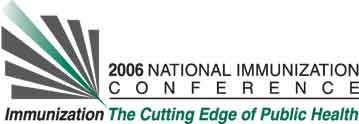Lane Wake, DCEED, Immunization Program, Colorado Department of Public Health and Environment, 4300 Cherry Creek Dr S, Denver, CO, USA, Marianne M. Koshak, Immunization Program, Colorado Department of Public Health and Environment, DCEED-IMM-A4, 4300 Cherry Creek Drive South, Denver, CO, USA, Joni Reynolds, CDPHE-A4-DCEED-IMM, Colorado Immunization Program, 4300 Cherry Creek Drive South, Denver, CO, USA, and Carol Stanwyck, NIP/ISD/AB, CDC, 1600 Clifton Road, M/S E-62, Atlanta, GA, USA.
Learning Objectives for this Presentation:
Describe a method of collecting immunization data from child care facilities.
Describe the immunization status of children in Colorado child care facilities
Background:
Immunization data from child-care facilities can be used to identify pockets of need. In Colorado these data are self-reported and there is concern regarding accuracy. A new method that sampled facilities and children and audited the immunization record was implemented in March of 2005.
Objectives:
Accurately determine the immunization status of children in Colorado child-care facilities.
Methods:
Child-care facilities were sampled from each of five regions. Local health audited sampled immunization records from each facility. Data collected included demographics, shot dates, and exemptions.
Results:
56.6% of children 5 years or less had documentation that they had received the required vaccines. Most children who were not up to date had nothing in the record as to why. 6.4% of children had no records on file. All five regions had less than 50% of one year olds up to date for the required vaccines. Up to date status declined dramatically for children who were 5 years of age. In two regions Hispanic ethnicity was associated with being up to date. In one region children born out of the country were more likely to be up to date
Conclusions:
Based on available records, over 40% of children in child-care facilities in Colorado are not up to date. Part of this is likely due to inadequate recording keeping by child-care staff as evidenced by the sharp drop in up to date status of children 5 years of age. The low percentage of younger children who are up to date is of particular concern in a state with rising incidence of pertussis. The multiple vaccines required through a complex pediatric immunization schedule in early childhood may contribute to the low coverage rates.
See more of Posters
See more of The 40th National Immunization Conference (NIC)

